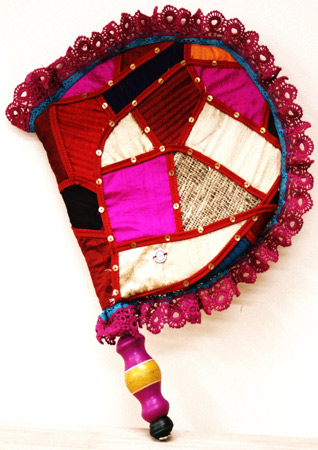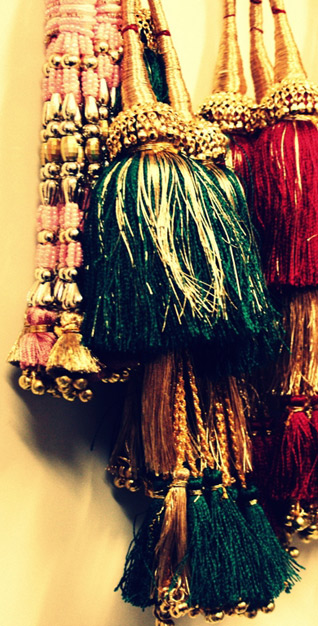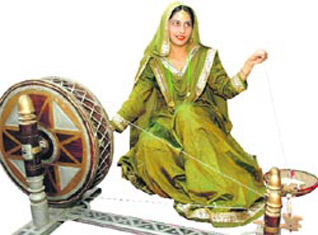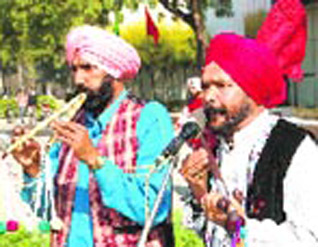History
Waning Punjabi Traditions
AMAR NATH WADHERA & RANDEEP WADHERA
Consider these two vignettes from two different villages in pre-Partition Punjab, circa early 1930s:
1 A huge baraat (wedding procession) reaches a village with scores of bullock-carts, horse-carts and raths (decorated bullock-carts) loaded with baraatis. In the absence of marriage palaces and five-star hotels, the guests were accommodated in the local gurdwara. But, the number of guests was too large. Therefore, those left out were taken into their homes by the villagers. Every family in the village was involved in extending hospitality to the guests, who would be staying for the wedding ceremony that lasted about a week. There was no panic or complaining. The animals were well looked after too. Today it may be difficult to believe but the farmers, not just from the host village but also the surrounding ones, removed fences that marked their farms and allowed the horses and bullocks to graze freely.
2 Another wedding. The bride's family is not well off. The rest of the villagers contribute generously towards her trousseau and dowry, apart from doing whatever is needed towards extending hospitality to the visiting baraat. The bride goes to her in-laws' home laden with ornaments and household goods.
* * * * *
The word “technology” was unknown then. Amenities like electricity and running tap water were absent. Kerosene too was not freely available, so people used mustard oil to light lamps, and wood as fuel for their chulha (hearth). Water had to be drawn from wells. And yet, a guest was treated like royalty. Life might have been a constant toil and poor lighting might have resulted in dim-lit surroundings but the Punjabi's heart was effulgent and the outlook sunny.
Those were the days when the girl child was looked upon as the daughter of the entire village. A marriage might have been between two individuals or two families but its success was a matter of the pind di izzat. (the honour of the village).
These traditions ensured relatively healthy relationships. Traditions were inclusive, honoured and practised by people of all religions and divisions (economic, caste-based, etc) in a village. If and when a marital discord cropped up it was considered a duty of the village elders to ensure smooth resolution.
Such traditions may be dismissed as too idealistic to be true. But, these were the norm in Punjabi society of yore.
Experts in social behaviour/psychology often remark that those traditions were offshoots of the agrarian economy wherein mutual cooperation was a must for survival. With the march of civilisation the need for such collectivism is not required any more, they argue.
What is being overlooked is the collateral damage done to the entire fabric of Punjabi society and values by this march of “civilisation“, which has taken individualism to a level that spells danger to the society as we have known it.
The concept of Punjabiat has become more a shibboleth than a matter of practice. Values and traditions form vital ingredients of our cultural identity; but, we err in assuming that these don't need looking after. Certain values like honesty, integrity, respect for elders, etc, require constant vigil and nurturing.
The march of civilisation has made traditional social structures redundant, but has failed to come up with viable alternatives. For example, the joint family system -- with all its faults -- was a powerful institution that inculcated certain healthy values. You acquired various social skills like interpersonal interaction within the family, which stood you in great stead in your dealings with the world outside. The emotional and material security offered by the now defunct institution has not been replicated by any other.
The moral authority of village elders used to be such that nobody dared stare at, leave alone tease, a girl. Any delinquency on this score used to be dealt with swiftly and severely. Once the youth stop respecting their teachers and elders they begin to trivialise the core of all social cohesion, viz., the moral authority.
There was a time when a policeman was almost an unknown entity in the countryside. A village chowkidar, wielding a mere stick used to be enough guarantee against crime, rare though it used to be. Today, even armed policemen are unable to strike fear in criminals' hearts.
The result is there for all to see. Women, children and the elderly have become most vulnerable to the spiralling crime rate.
Other aspects of our culture too, viz., our cuisine has been impacted.
Punjabi cuisine is an important cultural heritage because it is an accumulation of traditional wisdom regarding health and happiness.
Our traditional festivals too are getting commercialised. What used to be a collective affair has now turned individualistic. Earlier, the entire village used to assemble around the Lohri bonfire and share lighthearted banter, sing folk songs and even perform giddha. No more is a festival an occasion for people to get together and share greetings and joys. Be it Gurpurab or Lohri -- exchange of gifts is more an ego trip than gestures of goodwill -- worse, now these have also been turned into instruments of self-promotion.
Holi has already turned into the fest of the hooligan. The sanctity of festivals has been violated by crass commercialism.
The monsoon in Punjab is traditionally associated with a variety of celebrations and feasts of kheer, etc., while lasses on swings sing paeans to saawan (the rains). It is one of the most romanticised festivals for girls in Punjab and the surrounding region. Girls would deck themselves up in the best traditional finery and enjoy swings under a mango tree, while humming lyrics. There used to be spontaneity in these participations, which has disappeared since. Now, only government-sponsored festivals are observed at pre-selected sites, since neither our natural nor social environment permits an average Punjabi girl to celebrate traditions that are dying, if not already dead.
How we look at our history and heritage decides the cultural aspects of our society. Heritage, after all, does not merely tell us of our past. It defines our present even as it impacts our future evolution. A society that doesn't respect its heritage loses its identity and, eventually, goes to seed.
Before the advent of more sophisticated infotainment media, oral literature in the form of stories and poetry was used as medium of entertainment. Kaveeshars and dhaadis would be invited to villages by the well-off on formal occasions like marriages, festivals etc when they would render songs, poetry and folklore on demand.
Traditionally, dhaadis' renderings are accompanied with time-honoured musical instruments, viz., dhaad -- a percussion instrument, and sarangi -- a violin-like string instrument. One could also see them performing at various melas, reciting martial or love songs that fused fantasy with facts. Listening to them you would think that the singers had actually witnessed the events and verbal exchanges among diverse characters from history and mythology.
Although Heer, Jugni and Challa folksongs still reverberate throughout the Punjab countryside, this tradition too is on the wane. Yes, technology has enabled the likes of Gurdas Maan, Rabbi Shergill, Hans Raj Hans, et al to deliver folk music into our living rooms - but the experience remains too individualistic. We miss the warmth and colour of melas.
Many Punjabi lyricists and artistes are living in penury. Recently, the media had highlighted the plight of Ajaib Singh, who wrote more than 250 poems and songs -- some of which, like “Baba vay kalaan marod“, have become enduring classics. Today he is languishing in an orphanage.
Sometime back there were media reports regarding Amritsar's Manpreet Singh, who has built a medieval-looking house in the Verka village. It contains utensils, hand-pumps, kerosene lamps, spinning wheels, looms and various utensils that used to be a part of the quotidian Punjabi lifestyle several decades (even a century) ago. Of particular interest is a bed, said to have been gifted to Maharaja Ranjit Singh on his marriage to Rani Jindan. A lot of effort and money must have gone into building the house and collecting artifacts.
Such efforts might be symbolic and inadequate to trigger cultural renaissance, but are an inspiration for others.
[Courtesy: Tribune. Edited for sikhchic.com]
August 26, 2012
Conversation about this article
1: Baldev Singh (Bradford, United Kingdom), August 26, 2012, 6:26 PM.
Very interesting article ... but modernity too should be welcomed.






